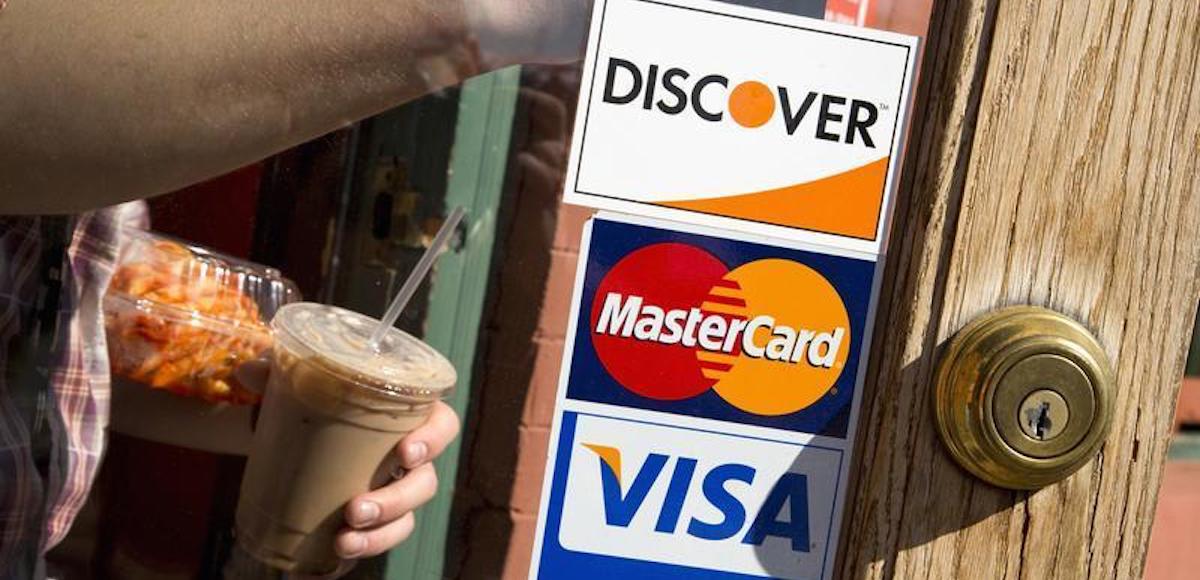

A coffee shop displays signs for Visa, MasterCard and Discover, in Washington, May 1, 2013. (Photo: Reuters)
U.S. consumers added another $92.2 billion in credit card debt during 2017 and outstanding balances surpassed $1 trillion for the first time ever, according to WalletHub’s latest Credit Card Debt Study. That’s the most for a single year since 2007 and 105% above the post-recession average.
Only 4 times in the past 30 years have U.S. consumers spent so much in a year, which might sound like a net positive for consumer spending and gross domestic product (GDP). But worth noting, in each of those four years, the charge-off rate – currently hovering near historical lows – increased the following year.
The $67.6 billion in credit card debt U.S. consumers added in the fourth quarter (Q4) of 2017 is the highest quarterly accumulation in the last 30 years. It’s also 68% higher than the post-Great Recession average.
Average Credit Card Debt per Household
| Q4 2017 | Q4 2016 | Percentage Change | |
| Average Credit Card Debt per Household | $8,600 | $8,131 | +6% |
| Total Credit Card Debt | $1008.5 billion | $950.20 billion | +6% |
| Quarter Net Increase | $67.6 billion | $58.20 billion | +16% |
The average credit debt per household rose 6% to $8,600, which is $138 higher than the level WalletHub identified as being sustainable. Total credit card debt also rose 6% to a total of $1,008,500,000.00, up from $950,200,000,000.00 in Q4 2017.
The research study is based on Federal Reserve data released Wednesday afternoon.






